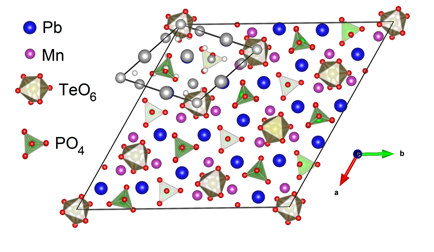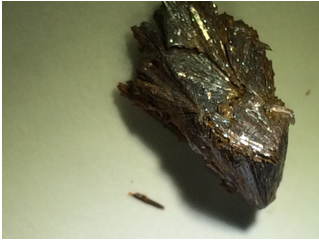58th Annual Report on Research 2013 Under Sponsorship of the ACS Petroleum Research Fund
Reports: UR1051374-UR10: New Multiferroics Based on 2D Frustrated Sublattices
Christopher R. Wiebe, BS, MSc, PhD, University of Winnipeg
The 2012-2013 fiscal year of our ongoing ACS Petroleum Fund grant has been extremely productive. The main thrust of our project, that of the discovery and characterization of new multiferroics, resulted in many prominent publications, including two in the Journal of Solid State Chemistry and the Journal of Physics: Condensed Matter. There were also many spin-off projects that were published in this time frame.
The dugganites, with chemical formula A3BC3D2O14, were explored as potential multiferroics with the series Pb3TeCo3X2O14 (X = P, V). The magnetism in both of these compounds is rich and complex, with multiple phase transitions at low temperatures. We now know that many of these transitions involve distortions away from the standard hexagonal symmetry of the traditional unit cell of these mineral-related compounds. We also successfully performed neutron spectroscopy on different members of the series and modeled the magnetism based upon the low-lying excitations. We now have a reasonable understanding of the magnetism, and how it affects the physical properties of these materials. The next step is to tailor the materials to have increased transition temperatures to make them more technologically relevant.
Figure 1: Neutron diffraction profile of the magnetic transitions observed in Pb3TeCo3X2O14
Our explorations of the crystal chemistry compounds of the dugganites have lead to the investigation of the new compound, Pb3TeMn3P2O14. While this compound orders in an intricate, large magnetic unit cell at TN ~ 6.6 K (similar to the multiferroic Ba3NbFe3Si2O14), the magnetic structure is unique. In addition, there is a large pseudohexagonal incommensurate supercell that develops which strongly affects the magnetism. Detailed physical property measurements, neutron and x-ray scattering experiments, and analysis have been completed on this compound. The large supercell is still under study, and will require detailed local probe techniques to elucidate (such as neutron PDF or XAFS). Finally, the multiferroic properties will need to be tested with colleagues at the National High Magnetic Field Laboratory in Tallahassee, Florida.
Figure 2: Magnetic supercell of Pb3TeMn3P2O14
We are now completing further studies on new members of the dugganite series, including the Cu2+ compound, which being S=1/2 should have exotic magnetic properties due to enhanced quantum fluctuations. The solid state chemistry of the Cu compound is complex, and a concerted effort has been made to understand the underlying mechanism for the reaction pathway. Considerable progress has been made towards this goal, which will facilitate the future synthesis of new members of this series.
Figure 3: Flux grown single crystals of Pb3TeCo3X2O14.
An unanticipated spin off of this research has been the discovery of the potential for these compounds as purple dyes. The Co2+ ion within the dugganite structure results in a brilliant purple color that can be tuned with non-magnetic doping to a slate blue. Purple is a rare dye, with not only commercial applications as a cosmetic, but also with spin-offs in other industries such as a possible absorbing material for solar radiation. We will be exploring a patent in the near future for this research and the entire series of newly discovered compounds.
Copyright © 2014 American Chemical Society














